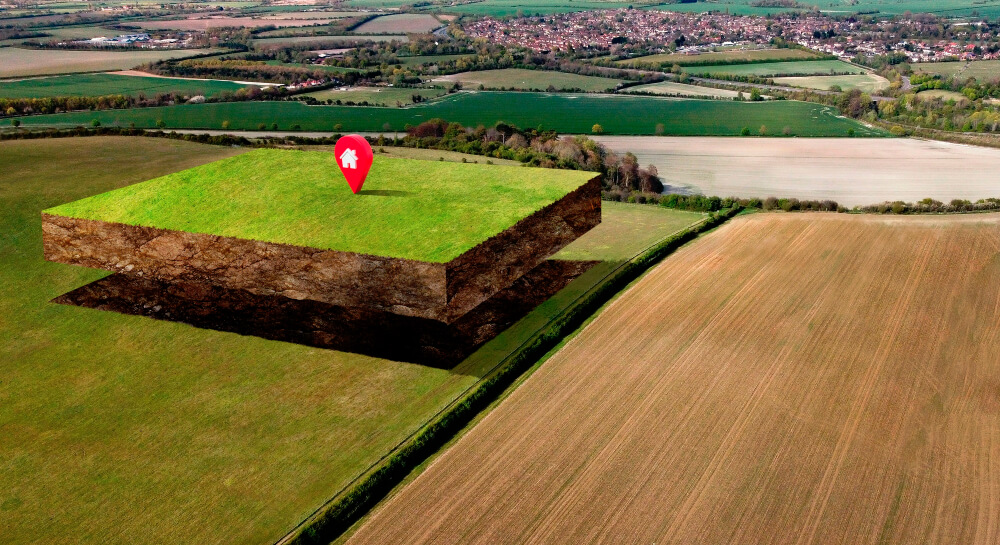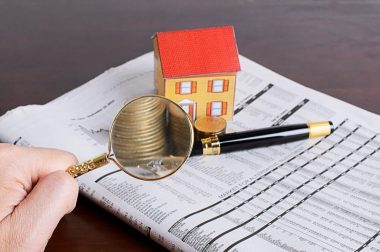How Do I Find the Zoning of My Property? Your Complete Guide
Updated Fri, Oct 17, 2025 - 13 min read
Top blog articles
Just bought a house and am wondering what you can actually do with it? Planning to add a home office, build an ADU, or start a small business from home? The answer starts with knowing your property’s zoning.
Don’t worry if you’ve never dealt with zoning before. By the end of this guide, you’ll know exactly how to find your property’s zoning, what it means, and how it affects everything from renovations to property value. Most importantly, you’ll avoid the costly mistakes that happen when homeowners ignore zoning laws.
Here’s the bottom line: Finding your zoning takes about 15 minutes online, but understanding it can save you $10,000+ in fines, legal fees, or having to tear down that addition you built without checking first.
What is property zoning?
Property zoning is your local government’s way of controlling how land gets used in specific areas. Think of it as a neighborhood rulebook that says “you can do this, but not that” on your property.
These rules determine:
- What you can build (house, duplex, apartment, business)
- How big can you build (height limits, lot coverage)
- Where on your lot can you build (setbacks from property lines)
- What activities are allowed (home business, short-term rentals, farming)
For example, you might be zoned “R-1” (single-family residential), which typically means you can have one house on your lot, but can’t convert it to a duplex or run a retail store from your garage.
Why does zoning matter for homeowners?
Ignoring zoning costs money. Here are the real consequences homeowners face:
- Fines: $100-$500 per day for zoning violations
- Forced removal: That $30,000 addition you built might need to be torn down
- Can’t sell: Title companies won’t clear properties with zoning violations
- Insurance issues: Some policies won’t cover unpermitted work
- Legal action: Neighbors can sue over zoning violations
But zoning also creates opportunities:
- Some zones allow ADUs (accessory dwelling units) for rental income
- Certain areas permit home-based businesses
- Mixed-use zoning can increase property values
- Understanding zoning helps you buy smarter
How do I find my property’s zoning? (Step-by-step)
Finding your zoning is easier than you think. Here’s exactly what to do:
Step 1: Check your city or county’s online zoning map
This takes 5-10 minutes and works for most people.
- Google “[your city name] zoning map” or “[your county name] GIS map”
- Look for your city/county planning department website
- Find the zoning map or GIS (Geographic Information System) tool
- Enter your property address or parcel number
- Screenshot or save the zoning information you find
What you’ll see:
- Your zoning designation (like “R-1,” “C-2,” or “MU”)
- Overlay districts (historic, flood zone, etc.)
- Sometimes allowed uses and restrictions
Pro tip: Your property tax bill usually has your parcel number (also called APN) if the map search tool needs it.
Step 2: Call your local planning department if online doesn’t work
When to call instead:
- Can’t find online zoning maps
- Information seems outdated or unclear
- Property has complex zoning history
- Planning a major renovation
Questions to ask:
- “What’s the zoning designation for [your address]?”
- “Can you email me a copy of the zoning information?”
- “Are there any pending zoning changes for this area?”
- “What uses are permitted in this zone?”
Pro tip: Planning departments are usually helpful and used to these questions. Call in the morning for shorter wait times.
Step 3: Review your property documents
If you’re buying (not just researching your current home), these documents show zoning details:
Property deed: May include deed restrictions beyond basic zoning
Title report: Shows easements that affect what you can build
Survey: Reveals setbacks and boundary issues
Building permits: Shows what’s legally established on the property
Your realtor or title company should provide these during the buying process.
Step 4: Hire a professional for complex situations
When to get professional help:
- Buying commercial property
- Property sits on a zoning boundary line
- Considering major development
- Previous owner made unpermitted changes
Who can help:
- Zoning attorneys ($200-$500/hour): Complex issues, appeals
- Title companies ($150-$300): Zoning verification reports
- Land surveyors ($300-$800): Boundary and setback issues
What do zoning codes mean?
Once you find your zoning, you need to decode what it means. Here are the most common types:
Residential zoning codes
| Code | What It Means | What You Can Do | What You Can’t Do |
|---|---|---|---|
| R-1 or RS | Single-family residential | One house per lot | No duplexes, usually no ADUs |
| R-2 or RD | Duplex/two-family | Up to 2 units | No apartments or businesses |
| R-3 or RM | Multi-family | Apartments, condos | Must meet parking requirements |
| R-A or RE | Residential estate | Large lots, sometimes horses | Agricultural uses limited |
Real example: Maria bought a house zoned R-1, thinking she could build a rental unit in the backyard. She couldn’t. If she’d checked first, she would’ve looked for R-2 zoning or areas that specifically allow ADUs.
Commercial and mixed-use zoning
| Code | What It Means | Impact on You |
|---|---|---|
| C-1 or NC | Neighborhood commercial | Near corner stores, minimal traffic |
| C-2 or GC | General commercial | More traffic, parking issues |
| MU or MX | Mixed-use | Can have homes above businesses |
Special overlay districts
These are extra rules on top of your base zoning:
Historic districts:
- Must maintain historic appearance
- Exterior changes need special approval
- Can’t just replace windows or siding
Flood zones:
- Higher insurance costs ($400-$2,000/year extra)
- Building restrictions
- May need elevation certificates
Airport zones:
- Height restrictions
- Noise disclosures required
As explained in HUD’s environmental assessment guide on land use and zoning, overlay districts serve important purposes like environmental protection and community safety, but they add complexity to what you can build.
What can I actually do with my property?

Knowing your zoning code is step one. Step two is understanding what you’re allowed to do.
Permitted uses (allowed by right)
These are things you can do without special approval:
- Build a single-family home (in residential zones)
- Add a garage or shed (within size limits)
- Landscape your yard
- Install a fence (within height limits)
Conditional uses (need special permits)
These require public hearings and approval:
- Home-based businesses
- Short-term rentals (Airbnb)
- Daycare facilities
- Some types of additions
Prohibited uses (not allowed)
Things you cannot do regardless of permits:
- Convert single-family home to apartments (in R-1)
- Open a retail store (in residential zones)
- Exceed height limits
- Build in required setbacks
Real example: Tom wanted to run a landscaping business from his garage. His R-1 zoning allowed “home office” but not “commercial vehicles and equipment storage.” He needed to rent a separate storage space or request a conditional use permit (which his neighbors opposed).
How much does zoning research cost?
DIY online research: Free (15-30 minutes of your time)
Planning department consultation: Free (phone calls or office visits)
Property document review:
- Included with home purchase
- $25-$75 if ordering separately
Professional services:
- Zoning verification report: $150-$300
- Land survey: $300-$800
- Zoning attorney consultation: $200-$500/hour
- Full zoning analysis: $500-$2,000+
Pro tip: Start with the free options. Only hire professionals if you’re dealing with complex situations or planning major investments.
Common zoning mistakes that cost money
Learn from other people’s expensive errors:
Mistake 1: Building without checking setbacks
What happened: Sarah built a detached ADU 8 feet from her rear property line. Her zone required 15 feet. Cost to fix: $12,000 to move the structure.
Lesson: Always verify setback requirements before building anything.
Mistake 2: Converting spaces without permits
What happened: Mike converted his garage to a home office without permits. When selling, title company found the violation. Had to either restore the garage ($8,000) or go through expensive permitting process ($3,000 + 6 months).
Lesson: Any change in use typically requires permits, even if no construction happens.
Mistake 3: Starting a home business in the wrong zone
What happened: Lisa opened a home bakery with clients coming to pick up orders. Neighbors complained about traffic. City shut her down for commercial activity in a residential zone. Lost $15,000 in equipment and deposits.
Lesson: “Home-based business” has strict definitions. Client visits often aren’t allowed.
Mistake 4: Buying without researching zoning
What happened: James bought a “great deal” of property to build a duplex. Turned out it was zoned R-1 (single-family only). Rezoning request denied. Lost $30,000 on selling at a loss.
Lesson: Never buy based on plans without confirming zoning allows those plans.
What if zoning doesn’t allow what I want?
You have options, but they’re not guaranteed to work:
Option 1: Get a variance
What it is: Exception to zoning rules due to hardship
When it works:
- Your property has unique physical constraints
- Strict interpretation causes practical difficulty
- Request is minimal
Process:
- File application ($300-$1,500)
- Attend public hearing
- Zoning board decides
- Timeline: 2-6 months
Success rate: About 30-50% depending on location
Real example: Janet’s lot was oddly shaped, making the required 20-foot setback impossible while still building a usable house. She got a variance for 15 feet. Cost: $800 filing fee + $2,500 for architect drawings.
Option 2: Apply for conditional use permit
What it is: Permission for uses that require case-by-case approval
Common uses:
- Home daycare
- Bed and breakfast
- Home-based business with clients
Process:
- File application ($200-$800)
- May need to notify neighbors
- Public hearing
- Approval with conditions
- Timeline: 1-4 months
Success factors:
- Minimal neighborhood impact
- Adequate parking
- Meets safety requirements
Option 3: Request rezoning
What it is: Changing the zoning designation of your property
When to consider:
- Large property or development
- Area is already changing
- Strong economic case
- Community support
Reality check:
- Process: 6-12 months minimum
- Cost: $5,000-$50,000+ (applications, attorneys, studies)
- Success rate: Under 25% for individual homeowners
- Requirements: Must align with city comprehensive plan
As detailed in HUD’s zoning reform initiatives, many cities are actively working on zoning reforms to address housing shortages, which may make certain changes easier in coming years.
Pro tip: Rezoning is expensive and rarely successful for individual homeowners. Variances and conditional use permits are more realistic options.
Working with contractors and zoning requirements
Your contractor should understand local zoning, but you’re ultimately responsible.
Questions to ask contractors about zoning
Before hiring:
- “Have you worked in [your city] before?”
- “What zoning-related issues should we expect?”
- “How do you handle setback requirements?”
- “Who pulls the permits?”
Red flags:
- “Don’t worry about permits”
- “Nobody checks that stuff”
- “We can do it cheaper without permits”
- Can’t explain zoning requirements
Common contractor zoning mistakes
Building too close to property lines:
- Required setbacks vary by zone (usually 5-25 feet)
- Includes decks, sheds, additions
- Violations must be removed or require expensive variances
Exceeding height limits:
- Some zones limit to 25-35 feet
- Measured from grade (ground level)
- Includes chimneys, antennas
Lot coverage violations:
- Most zones limit building footprint to 30-60% of lot
- Includes all structures
- Driveways sometimes count
Pro tip: Get everything in writing. Make sure your contractor agreement specifies they’ll comply with all zoning requirements and obtain necessary permits.
Read more: Working with contractors on permits
How zoning affects your home’s value
Understanding zoning helps you buy smarter and sell higher.
Zoning factors that increase value
Flexible zoning (+5-15% value):
- Allows ADUs for rental income
- Permits duplex conversion
- Home-based business allowed
Proximity to good commercial (+3-8% value):
- Walking distance to neighborhood commercial
- Near amenities without traffic
Large lot in right zone (+10-20% value):
- Estate zoning with privacy
- Development potential
Zoning factors that decrease value
Restrictive overlays (-5-10% value):
- Historic district limitations
- Expensive flood zone insurance
- Airport noise zones
Non-conforming use (-10-20% value):
- Can’t rebuild if damaged
- Harder to get financing
- Limited buyer pool
Nearby zoning conflicts (-5-15% value):
- Industrial near residential
- Adult businesses nearby
- Heavy traffic commercial
Real example: Two identical houses on the same street. One is zoned to allow ADU, one is not. A house with ADU-friendly zoning sold for $45,000 more because buyers saw rental income potential.
Zoning red flags when buying a home
Walk away or demand price reductions if you find:
Immediate deal-breakers
Active code violations with legal action pending
- You inherit the problem
- May need expensive corrections
Illegal additions that must be removed
- Previous owner built without permits
- City ordered removal
Properties in transition zones with unclear future
- Zoning changes being discussed
- Could restrict your plans
Warning signs requiring investigation
Property priced 10%+ below comparable homes
- Often means zoning issues
- Investigate before offering
Recent zoning changes in the area
- May indicate more changes coming
- Could affect future plans
Multiple permit violations in history
- Pattern of problems
- May have hidden issues
Grandfathered non-conforming use
- Can’t rebuild if destroyed
- Difficult to modify
FAQs about property zoning
Can I change my property’s zoning myself?
Technically, yes, but it’s difficult and expensive. You’ll need to file a rezoning application ($1,000-$5,000+), attend public hearings, and show your request aligns with the city’s comprehensive plan. Success rates for individual homeowners are under 25%. Variances and conditional use permits are usually more realistic options.
How do I know if my neighbor’s property affects my zoning?
Your neighbor’s zoning can affect you if they’re doing something that violates setbacks, generates excessive noise, or creates parking problems. Check your neighbor’s zoning on the same online map you used for yours. If they’re violating zoning, you can file a complaint with your city’s code enforcement department.
What happens if I build something that violates zoning?
You’ll receive a notice of violation giving you 30-90 days to correct the issue. Options: (1) Remove the violation (expensive), (2) Apply for a variance retroactively (not guaranteed), (3) Face fines of $100-$500 per day until corrected. Violations also block property sales and refinancing.
Do ADU rules override normal zoning?
Sometimes yes! Many cities have created special ADU programs that allow accessory dwelling units even in single-family zones. These programs often have specific rules about size (usually 800-1,200 sq ft max), parking, and owner-occupancy. Check if your city has an ADU ordinance that supersedes base zoning.
How long does zoning information stay current?
Zoning can change anytime through city council action. Base zoning usually stays stable for decades, but overlay districts, height limits, and allowed uses can change more frequently. If you found zoning info more than 6 months ago, verify it’s still current before making major decisions.
Can homeowners associations add restrictions beyond zoning?
Yes! HOA rules (CC&Rs – Covenants, Conditions & Restrictions) can be MORE restrictive than zoning, but never less. For example, your zone might allow fences up to 6 feet, but your HOA might limit you to 4 feet. Always check both zoning AND HOA rules before any project.
Last thoughts on finding your property’s zoning
Here’s what you need to remember: Finding your property’s zoning takes 15 minutes and can save you thousands of dollars in mistakes. Whether you’re buying, renovating, or just curious, knowing your zoning gives you the power to make smart decisions.
The process is simpler than it seems:
- Check your city’s online zoning map (free, 10 minutes)
- Call the planning department if you have questions (free, helpful)
- Review property documents when buying
- Hire professionals only for complex situations
Most importantly: Never assume you can do something without checking. That ADU, home business, or addition might not be allowed. Five minutes of research today prevents $10,000+ in problems tomorrow.
Zoning laws exist to protect neighborhoods and property values. Working within these rules—rather than fighting them—usually leads to better outcomes for everyone. And when zoning doesn’t allow what you want, you have options: variances, conditional use permits, or finding a different property that fits your plans.
Ready to check your zoning? Start with your city’s website right now. Know what you’re working with before you buy, build, or renovate.
Planning a home project? Use our free cost estimator to understand renovation costs, then verify your zoning allows the work. Connect with local contractors who know your area’s zoning requirements.
Your opinion matters, leave a comment









